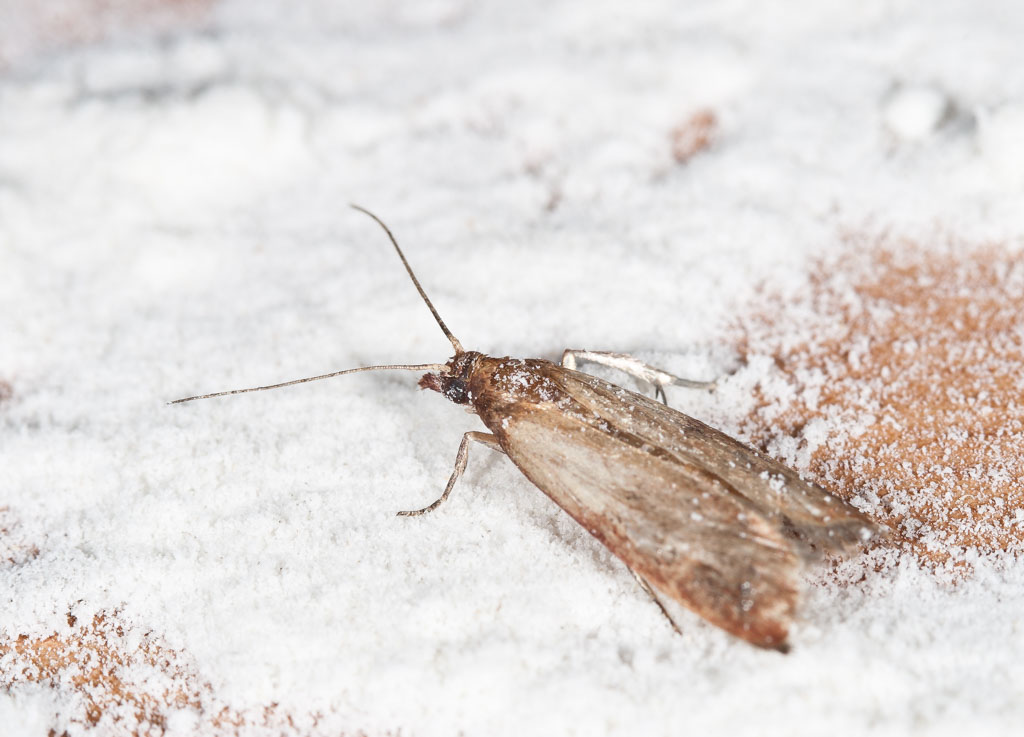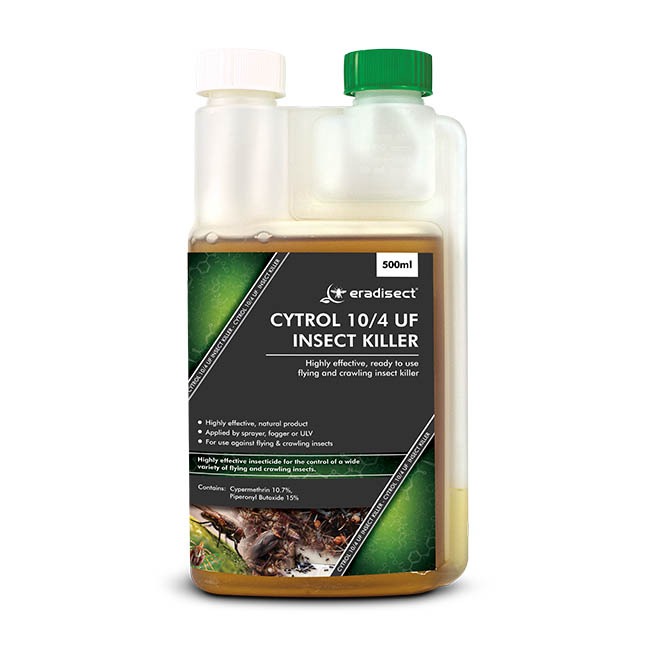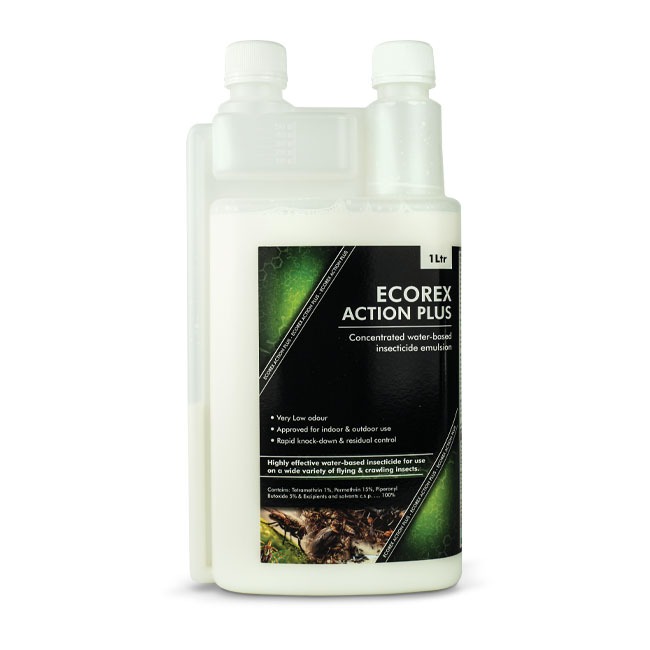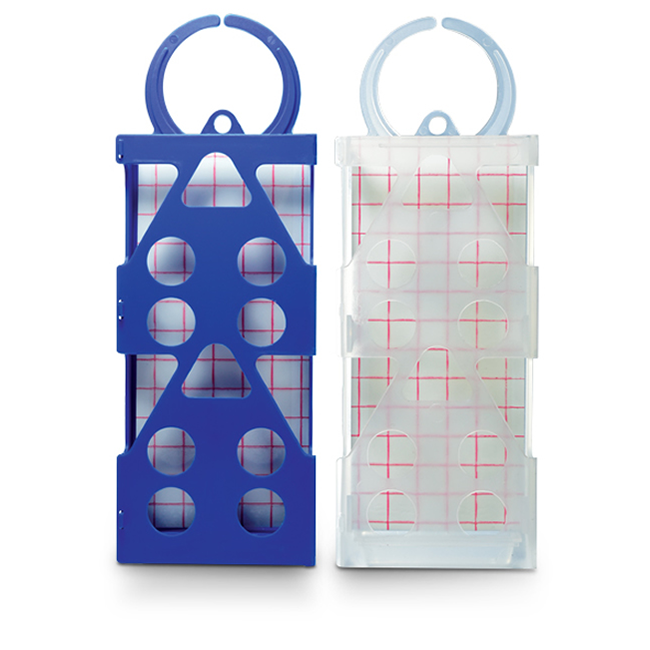Mediterranean Flour Moth/Mill Moth (Ephestia kuehniella)
 |
Favouring a cereal or cereal product based diet, the mill moth is frequently found in flour processing and handling environments, bakeries and shops. The Mediterranean flour moth infests flour, cereals, bran, beans, biscuits, nuts, chocolates, dried foods and many other food stuffs. Larval webbing can cause serious blockages in food production machinery.
Identification:
Adult moth 12mm in length with a wing span of between 16-20mm, brownish-grey in colour with a black zig zag pattern across the forewings. Larvae are 12mm in length, live within a silken tube and have a pinkish or greenish tinge (depending on diet) with a brown head.
Biology:
Females may lay up to 200 eggs over a 2 week period. Larvae are active, secreting and depositing large amounts of silk within their micro-habitat. After 5 or 6 moults, they move upwards toward wall / ceiling junctions where they secure themselves for pupation and emergence after diapause. The complete life cycle from egg to adult usually takes 8-10 weeks but may be completed in 4-6 weeks depending temperature and conditions.
Control:
Since these moths can infest so many types of food products, inspect thoroughly. There may be several infested products, discard any food that is infested. Infested areas should be thoroughly vacuumed paying particular attention to cracks and crevices, contents of the vacuum cleaner should be disposed of in an outside bin. Store new food products in sealed glass or plastic containers. Any insecticidal treatments that may be applicable should be timed for adult emergence to achieve maximum effect. Residual sprays should be targeted at resting places and harbourage areas. Monitoring traps can be used as an indication of adult emergence.
Products to control Mediterranean Flour Moth/Mill Moth:
|
Cytrol 10/4 UF (500ml) |
Ecorex Action Plus (1L) |
Eradisect Moth Hanger (pack of 10) |



